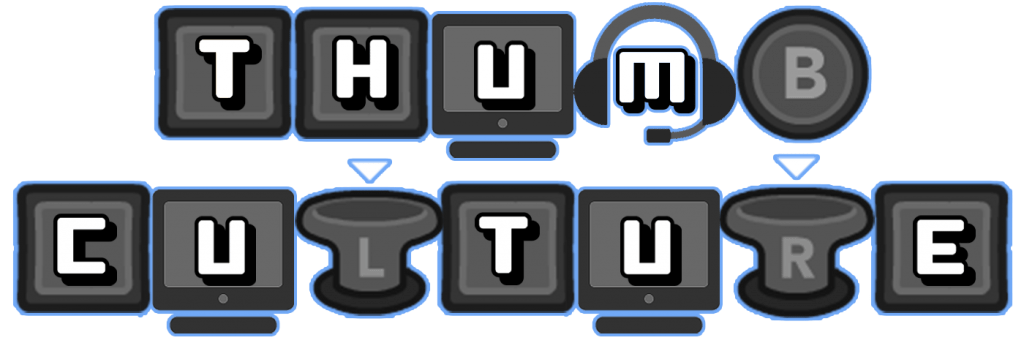
The Atelier series is a long-running Japanese RPG series from developer Gust and publisher Koei Tecmo. With this latest release, Atelier Yumia: The Alchemist Of Memories & The Envisioned Land, the series now has 26 main entries, and 17 spin-offs. With such a vast history, it can feel daunting to jump in at the latest point and essentially ignore all the previous games. However, that’s exactly what I’m going to do. So, I’ll be bringing you a review from the point of view of an Atelier newbie. As a small aside, I do have the Ryza trilogy in my backlog, so hopefully this will give me a flavour of what to expect there.
You, Me & Yumia
A cold-open gives us a glimpse at a party of characters, riding a large platform upwards. Among the party is main character Yumia Liessfeldt. Suddenly, the roof of the structure begins to collapse and breaks part of the platform, causing Yumia to fall. This leads us to a brief tutorial on combat and exploration. Yumia makes her way up the building to reunite with her party. A confrontation then takes place with a couple of antagonists, and Yumia is sent hurtling off the building. This ends the cold-open, which was actually a flash-forward to events later in the story. For now, we join Yumia as she begins her work for the Aladiss Investigation.

The tutorial section was too stop-start-y for my liking, interrupting gameplay frequently with dialogue boxes explaining mechanics. I’d have preferred these to have been simply displayed on screen off to the side while I was exploring and trying things out. I was glad to get more fluid control following the opening.
Gameplay
Atelier Yumia is an open-world RPG. It features a multitude of systems and mechanics, but is heavily exploration focused. You’ll spend a lot of time traversing the large, sprawling maps, discovering points of interest and collecting items and ingredients. The ingredients are used in the series’ main mechanic, Synthesis. Synthesis allows Yumia to create items, including weapons and armour, from gatherables. The game also features combat, which has an action-leaning system, rather than turn-based. If this wasn’t enough, there’s also base building, questing, fishing, and puzzles.
Story
Long ago, the Aladissian Empire thrived thanks to the power of Alchemy. That was until a mysterious cataclysm befell them, and destroyed everything. Centuries later, Alchemy is now considered a taboo practice. A research team has been tasked with investigating the history of Aladiss, and newly joining the efforts is Alchemist Yumia. A few years earlier, Yumia lost her mother who, unbeknownst to her at the time, was also an Alchemist. Yumia is now on a mission to not only assist the research team, but to also find answers to her own questions. Is Alchemy inherently evil? Was her mother?

Along her journey, Yumia will meet a host of characters who will join her. The first of these are brother and sister Viktor and Isla Von Duerer. The pair have ties to the same disaster that Yumia lost her mother to. This allows for there to be some chemistry and conflict between the characters to begin with, mostly focused around Viktor’s understandable scepticism about Alchemy. This mistrust of Alchemy and Alchemists forms a strong core to the story and to characters interactions and motivations, at least in the first half of the game.
What I have really enjoyed about the writing and story so far, is the lack of contrived misunderstandings between characters. Characters have conflicts and opposing views at times, but through discussion and compromise, often find ways forward that make sense. It’s refreshing to see in a world where a lot of media would force wedges between them in order to have a reconciliation later. I also like the general light-hearted nature of the game, despite it also containing the more serious and heavy main story. It has been striking a good balance for me.
Combat
In contrast to how much I’ve been enjoying the character and the story, my feelings on combat are mixed. It’s an action-based setup, but lacks some fluidity I’ve found in other action RPGs. Each attack type has a limited number of usages, with a cooldown to replenish them. So you might be able to use one attack 3 times but then have to switch to another while the cooldown is in effect. The attacks vary between magical and physical depending on if you are attacking from the outer or inner range. This distinction is important because enemies can be staggered by stacking up a certain number of attacks of either type.

On top of those attacks, each character can also use items. These are tools you create via Synthesis. Items have an element associated with them and allow you to strike at an enemy’s weakness when they are stunned. You can also perform counters by dodging attacks with good timing and switching to another character. Blocking and moving in a circular range around an enemy are also defensive options available during combat.
Additionally, a Battle Rate gauge builds by being effective in combat, and once high enough, enables a strong special attack called a Mana Surge. I’m not sure if I’ve fully unlocked this yet, or just missed it among the chaos of battle. Either way, I’ve not used it so far.
Woes
I think my biggest gripes with combat in Atelier Yumia are the responsiveness and the UI. When using the general attacks, I was always unsure about how long the attack would take to perform. Therefore, I didn’t know how long it would be until I needed to, or could, issue another attack command or dodge. I also didn’t like that switching between attacks and items was a toggle, rather than a press and hold. You’re also unable to switch between the 2 menus while an action is in progress. This meant I could easily end up spamming tools instead of attacks. The UI is very, very busy during combat, with enemies, their attack wind-ups, particle effects, health bars, other characters, etc, flooding the screen.
Thankfully, the combat is not particularly difficult and after a period of getting used to everything, I found it manageable. I also seemed to be levelling up very quickly, meaning grinding hasn’t been a requirement. Still, it’s not my favourite system in the world.
World
Let’s talk about Atelier Yumia‘s maps. They are pretty big, and packed with stuff. It’s quite overwhelming at first, to be honest, when you’re presented with the map and let loose. There are question marks littering the world, like someone gave The Riddler adderall and let him go wild. I did my best to ignore a lot of the noise, and focus on heading to the main objectives, investigating little bits on the way. Very quickly, though, I found myself sucked in to a pattern of getting distracted by bits and pieces everywhere.

This type of game is really dangerous for me. Maps filled with micro-objectives and busy work that reward me with an increasing % on a tracker and EXP or Skill Points to upgrade my character. Hours turned into minutes, and the main story became a distant memory. Ultimately, it’s a really fun world to explore. I really liked the setting and the environments, and while combat was tedious for quite a while, it’s easily avoidable.
There are a couple different type of side-quests to attend to too. Personally, I’d advise you avoid the ‘?’ ones as they’re unfulfilling, repeatable item deliveries for the most part. The best side-quests are ones denoted by a picture of one of your companions, as these are related to the characters and advance their personal stories. Keep an eye out for those.
Synthesis
One thing you will immediately notice as you explore are the innumerable resource icons. Atelier Yumia is extremely liberal with the amount of stuff you can collect. All the ingredients you can gather, whether by picking, mining, smashing, or shooting, are important for Synthesis. In this slightly puzzle-y item-combo mini-game, Yumia can combine several ingredients of varying quality and attributes to create new items. How well an item resonates to the core of the new item you’re creating will increase it’s quality and potential effects.
I found this system to be a little overwhelming and underwhelming, simultaneously. I’m not sure that I understood all the intricacies of how I should be trying to use different items and cores. There’s a LOT of information provided to you, and a lot of ingredients you can use. At the end of the day, I haven’t yet found a need to optimise this in any way to improve progress in the rest of the game. Given that, and the fact that you can automate the process with one of four presets, I didn’t feel the need to engage highly with Synthesis yet.

This makes me a little wary about approaching other games in the series, as from the little bits I’ve seen written, Yumia doesn’t rely as heavily on Synthesis as the rest of the Atelier series. Conversely, perhaps the other games would make it more appealing to perform.
Other Systems
Atelier Yumia, along with the mechanics discussed above, also features a base building system. During exploration, as you cleanse the different regions and areas of Aladiss, you’ll unlock places where you can construct different buildings. Some of these buildings can then be furnished by creating chairs, tables, sofas, plants, beds, etc. I’ve never been very creative with this type of thing. I’ll add the minimum amount of stuff the game requires me to, to pass an objective, and be on my way. It looks like there’s a fair range of customisation available, though. For me, the present and randomised build options came in as a saviour to ensure I could have a quick way to place what was necessary and move on.
There are some rotation based puzzles thrown into the game, too. These are used to activate certain objects in game when exploring, such as zip lines, or to unlock item chests. Once such puzzle involves a grid of squares containing lines, which, when rotated correctly, will join up from point-to-point and glow green. These are never taxingly difficult. It is, however, one example of an activity that begins to feel a little like padding. Another example is when opening a chest earns you a key to open a Treasure Trove, instead of just getting items. I’ve tried not to explore this track of thought too far though because it inevitably leads me to question what the point of games is entirely if I question cascading mechanics like this.
Camera Issues
One important issue to mention, which I was hoping might have been patched before this review, was the camera. As you’re swinging the camera around while exploring, it has a tendency to disagree with the placement of walls. This causes it to stutter around in a really distracting and disorienting way. By default, there’s also a camera shake mechanic, which I didn’t figure out the use for before disabling it in the menu due to it again, being overly disorienting. Another strange choice made with camera movements is the end of battle animation for Yumia. There’s a kind of pan and zoom motion, then ends really abruptly as the camera tries to return to its regular position. I really didn’t like this.

There are a couple of options in the menu to make this less annoying, including turning off the autocorrect. I recommend these changes are made as soon as you start the game. Hopefully these issues will be patched soon.
Graphics & Audio
Make no mistake about it, this is the best looking Atelier game so far. Obviously, I’ve not played any of the others, but I’ve taken a look through some footage of previous titles and Yumia is an improvement even on the impressive Ryza 3. Gust has made great improvements in the fidelity of the characters, elevating the anime-styling with much better shading. Environments are wonderfully detailed and densely populated, making them feel vibrant and lush. I do wish there was an option to remove the resource icons, though. They do ruin the view sometimes.
Playing on the PS5, I had the graphics option set to Quality. I never noticed any issues with glitches or pop-in, which is always good. Cutscenes all appear to be rendered in real-time too, meaning your customisations will remain during critical story moments. It has been strange to see so many loading screens again though, I thought we’d mostly left those in the last gen console.
The soundtrack is really pleasant. I’ve had a couple of the songs stuck in my head over the past week. Unfortunately, the soundtrack doesn’t appear to be on streaming services yet, so I can’t binge it during office hours.
I was slightly saddened by the lack of English voice work. Usually this wouldn’t be much of an issue, but as you’re exploring, the characters will occasionally talk amongst themselves. As this was all in Japanese, and happened as I was engaged in exploring, I often didn’t have time to catch the subtitles. I don’t think I’m missing critical dialogue, but it also feels like I’m not getting a chance to appreciate these little interludes.

Longevity
You’re easily looking at 50+ hours for anything close to 100% completion in Atelier Yumia. I’m approaching 25 hours and I’m roughly half-way through the main story. I’ve unlocked the third area, out of 4, but have only achieved around 75% completion in area one, and about 60% in area 2. There is plenty to do and see and if like me you get sucked into making those completion percents go higher, you’ll be spending dozens of hours lost in the world of Aladiss.
We’re still a bit too early in the games life to get good data from HowLongToBeat. The one recorded playthrough there suggests 20 hours to complete the main story.
Final Thoughts
I’m aware I’ve made a few complaints and nitpicks about Atelier Yumia above. Truth be told, I’ve struggled to put the game down. There’s so much going on, it’s difficult to cover it all. I’ve not even spoken about the energy meter that in theory limits how much exploration can be done and Synthesis you can perform. For me, it never really became a blocker. I’ve also avoided talking about the story and characters because I never like giving these details away in a review. Just know I’ve found the characters and the interpersonal relationships and stories to be charming.
Despite not feeling like I want to, or need to, engage with all its mechanics, I’ve had enough fun purely with the exploration, the characters, and the story. I’m not convinced that the other Atelier games would closely match the vibe of Yumia, but I’m definitely willing to give them a chance based on my experience here. As a newcomer to the series, I’d be happy to recommend people could start with this entry and see how they feel about it before exploring further games. For existing fans, I don’t know how this matches up to series favourites.
I more than happy to Synthesize Atelier Yumia: The Alchemist Of Memories & The Envisioned Land a Thumb Culture Gold Award.

Disclaimer: A code was received in order to write this review.
Mike previously reviewed the Atelier Mysterious Trilogy and Atelier Sophie 2. Please check out those reviews too if you enjoyed this one.

YouTube | Facebook | Twitter | Instagram | Discord | Podcast
